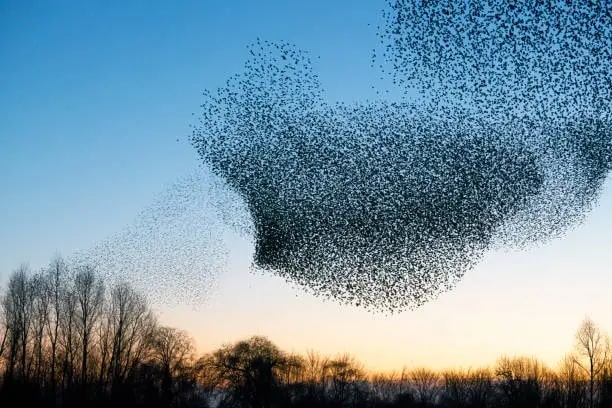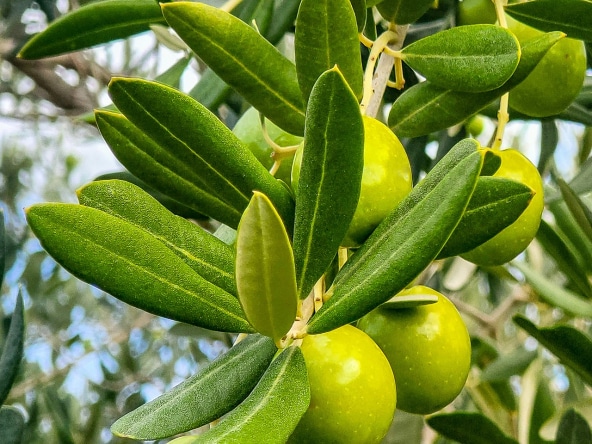Solar panels and starlings
Starlings are a pest and some municipalities, such as the Mollerussa Town Hall, try to combat the plague of starlings with twenty loudspeakers that emit raptor cries to scare them away. Starlings take refuge at night in the populations where they have their bedrooms, to protect themselves from predators and the thermal gradient of the cities. The massive presence of starlings spoils the pavement and street furniture with their defecation. The pest prevention systems for these birds consist of sound deterrent devices and speakers that are programmed to emit, when it begins to get dark, a simulation of raptor cries that scare the starlings and thus prevent them from sleeping in the trees of the populations. and minimize the health problems that they cause and that motivate citizen complaints. Although these deterrent measures are effective for a while, the starlings eventually get used to it and return to sleeping in the trees of the towns.
In other populations, such as Girona, fewer starlings are observed in the Poet Marquina Square with the actions to scare the birds consisting of:
- lasers,
- alarm sounds
- cries of birds of prey,
- falcons,
- traps
- pyrotechnic devices
This entire battery of measures has a high economic cost and is used to try to drive the birds out of the trees in the towns and although the contracted company points out that each year they detect fewer specimens due to the effectiveness of the system, the intervention has to be repeated. because there are too many birds and their feces dirty the public roads.
Starlings use chaos as a defensive weapon.
When these starlings are about to descend in large flocks to sleep in the trees of the towns, the peregrine falcon tries to capture them, but who will win over the speed of the falcon or the chaotic formation of the starlings? The starlings, with their coordinated movements, confuse the falcon, which barely manages to get hold of any prey.
Other causes of the spread of starlings are:
- Their gregariousness protects them from birds and other predators.
- Starlings harass and drive other birds from their nests.
- Starlings eat up the food that allows other species to survive in winter.
- There is a correlation between the large number of starlings and the decline of other species.
- They are an omnivorous species that can exploit a wide range of foods, from invertebrates, to seeds and fruits.
- Their binocular vision combined with their beak features allows them to find food in colder climates better than other birds, meaning they do not have to migrate to warmer climates in winter.
- His cognitive abilities make him practically invulnerable to attacks by humans.
Starlings, an invasive species that is here to stay.
The common starling, also known as Sturnus vulgaris, is a species of bird that belongs to the family Sturnidae. It is characterized by its iridescent black plumage with white star-shaped spots on its upper part during the breeding season. In winter, its plumage becomes more mottled.
Common starlings are omnivorous birds and feed on a wide variety of foods, including insects, worms, fruits, seeds and human waste. They are known for their ability to imitate sounds and can be quite noisy in their flocks. This species is native to Europe, but has also been introduced to other parts of the world, including North America. They are social birds that often form large groups during the winter, and can cause problems in urban areas due to their gregarious behavior and habits.
The spotted starling Sturnus vulgaris It has already invaded America in both its northern, central and southern parts. This voracious invasive species came to the United States because of Shakespeare, in fact one cold morning in March 1890, the pharmacist and theater fan Eugene Schieffelin, an immigrant of German origin, went to Central Park in New York loaded with cages full of birds. Influenced by the work of William Shakespeare, Schieffelin opened the cages and freed the birds. This serious environmental mistake changed the ecology of the United States forever.
Shakespeare only mentioned starlings once in "Henry IV." Hotspur rebels against the king and thinks that one way to torment him would be to teach a starling to say "Mortimer," the name of one of the king's enemies. That single mention is the cause of a true environmental disaster.
Schieffelin was a member of the American Acclimatization Society, which aimed to introduce plants and birds from Europe to the "New World," so that immigrants would feel at home upon arriving in the new nation of America. His irresponsible act is the reason why there are around 200 million starlings in North America today, which constitutes a disaster for farmers and ranchers and also for homes and urban furniture in cities. It is estimated that this invasive species causes nearly $1.000 billion in damage in the United States of America each year.
They are also a serious danger to aviation because when an aircraft crosses one of their thick flocks, the birds enter the engines and the effects are devastating.
In the case of South America, its presence is a more contemporary phenomenon, with the first sightings recorded in Buenos Aires in the early 1980s, particularly in Argentina, putting significant pressure on the local ecosystem. Experts from the National University of La Plata are analyzing the behavioral patterns and the repercussions of these birds on the environment.
“Foreign creatures enter into competition with native ones for the same resources. Moving and introducing a species into a new environment is always the beginning of an invasive process. But the final stage of this process, where the species manages to establish itself with a growing and expanding population, is influenced by multiple elements,” commented Dr. Adrián Jauregui, leader of the research and member of the Bird Ecology Laboratory of the Institute of Limnology “Dr. Raúl A. Ringuelet”, linked to the National University of La Plata and CONICET.
The nests in the solar panels
The common starling is a passerine bird that seeks nesting cavities and has extended its presence to Oceania and America.
Starlings are often confused with corvids because they are excellent imitators that have the ability to copy the songs of other birds, but they are not satisfied with that, they also faithfully reproduce sounds as different as the croaking of frogs, the telephone cell phone or car alarm. They have also often been related to corvids due to the dark color of their plumage, the ability to squawk, and their high cognitive capacity. It is in this last trait where lies its ease in recognizing bird songs or other sounds, memorizing them and emitting them in certain circumstances or times of the year.
But unfortunately its uncontrolled expansion is harming other native species and causing serious damage to agriculture, livestock and cities. And the most unfortunate thing is that we are facilitating this expansion:
Solar panels for the production of electricity or domestic hot water are placed on our roofs. If it is a modern construction, the plates are already integrated into the structure of the building, however in many of the houses that have an Arab tile roof, the plates are placed on top of the tiles, which creates a lot of cavities where these Birds can nest and raise their broods safely.
Starling nests are very voluminous and are often composed of very heterogeneous materials in addition to plants, such as plastics, pieces of fabric and especially pieces of expanded polystyrene known as polystyrene that they obtain from garbage dumps and even from the anti-bird protections that we put on the eaves of our buildings. These voluminous nests embedded between the tiles and the solar panels can seriously damage the integrity of the building, in fact: in the event of torrential rains the water is retained by the nest and the channels fill with water up to the level of the previous tile where Water can enter the building and cause leaks and all kinds of damage.
But starlings don't care about the damage they cause to buildings and thanks to our houses and our solar panels they are growing at growth rates never seen before the era of renewable energy.






